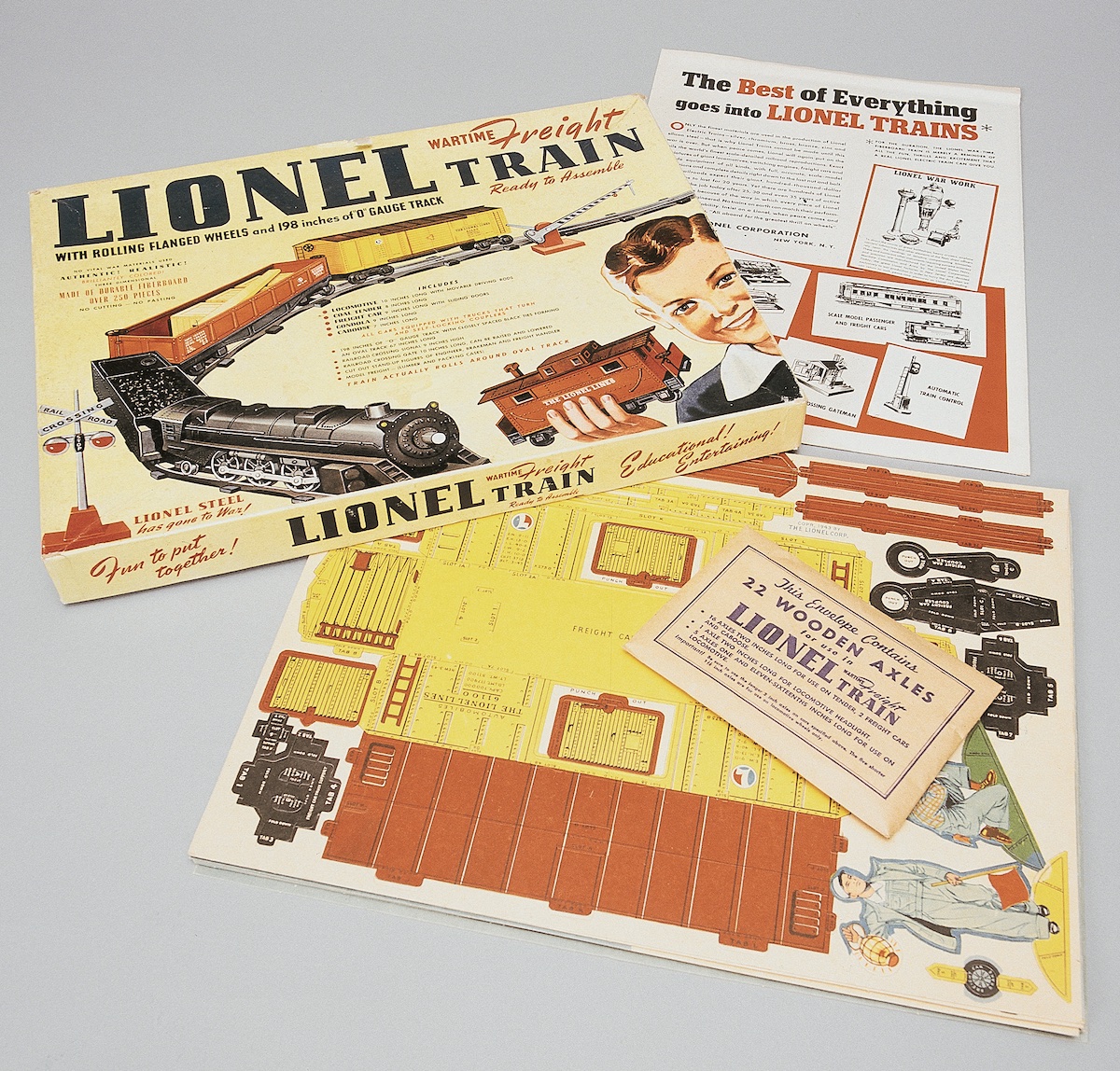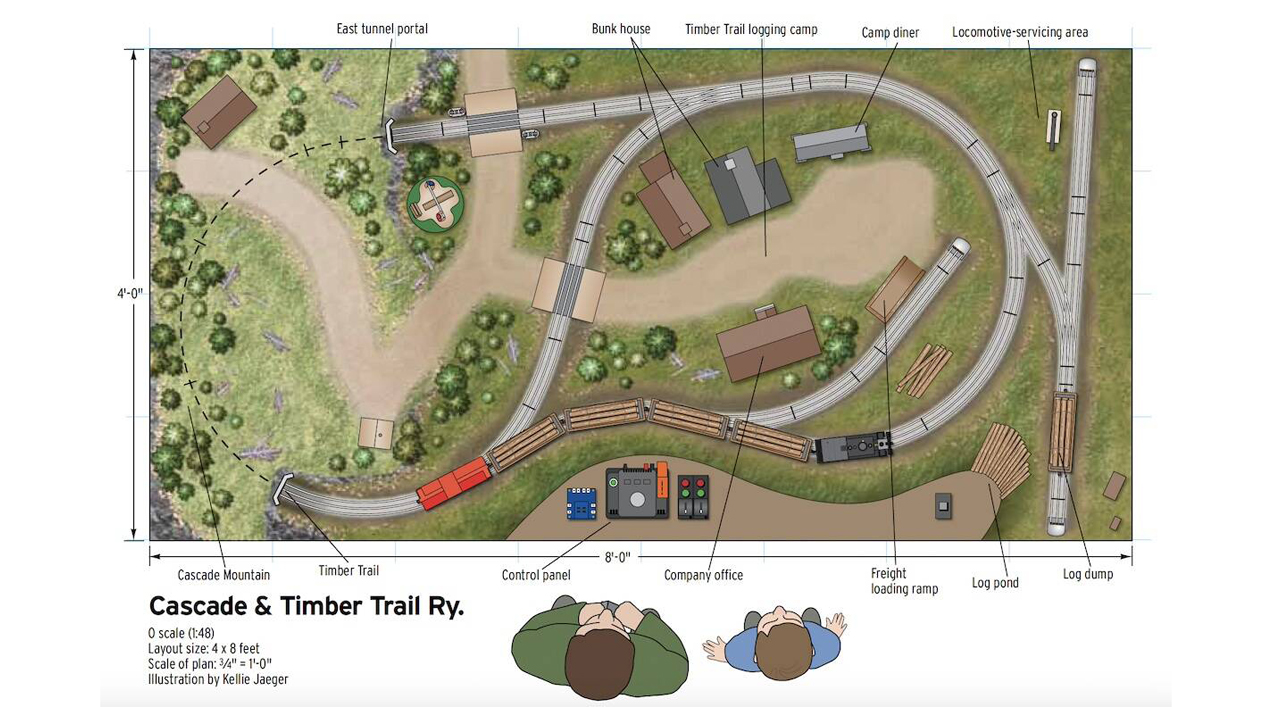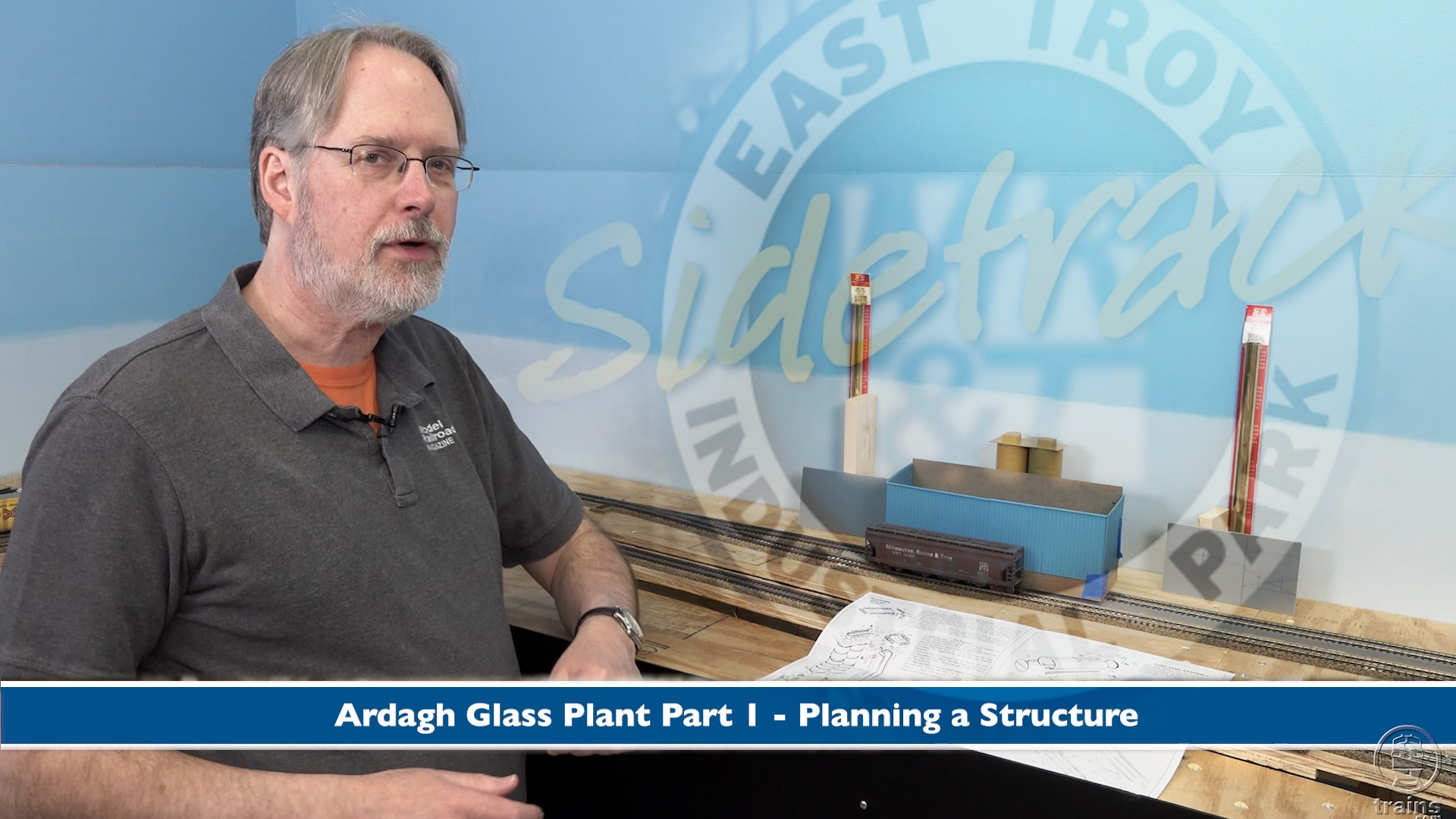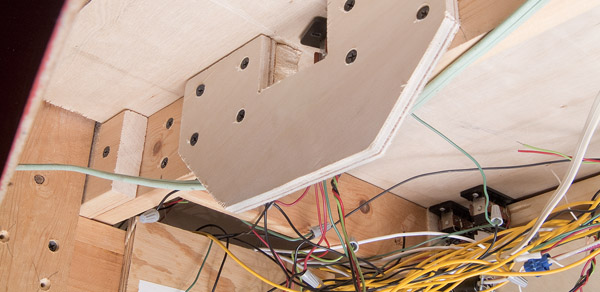
A case in point – Another layer of planning
Not so long ago I was installing switch machines on my N scale layout. The plywood is only 1⁄2″ thick, so I was expecting the drill bit to break though rather quickly. However, it just kept going and going. Obviously there was something down there. Turned out my hole was centered perfectly over a 1 x 3 stringer about 8 feet long.
A routine little job that normally would have taken 10 minutes ended up taking several hours, as I soon found that the next switch machine in line was in the same predicament.
Now, smart planners will point out that this situation never would have occurred if I’d planned better, and of course they’d be right. It would have been simple to lay a fresh sheet of tracing paper over my plan and design my benchwork so that all of the switch machines would be clear of stringers and joists. That probably would have taken all of 15 minutes. I’d done benchwork planning on other parts of the layout, but here I didn’t.
This aspect of planning is particularly important in N scale, especially on a yard lead, because the switch machines will be much closer together than for larger scales, leaving little room for fudging. After all, the models on the tops of our layouts may be smaller, but down underneath we’re using the same switch machines, terminal strips, and other apparatus that the HO modelers do. It can get mighty crowded down there.
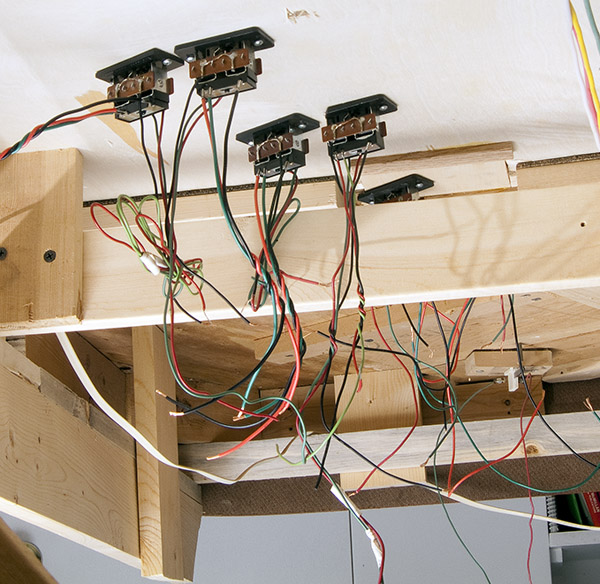
Building for adjustments
Even if you plan more thoroughly than I did, you’re still likely to run into situations later on where benchwork components will be in your way. When you do you’ll be glad you took the extra time and effort to make modifying your benchwork easy. That means, 1) no glue, and 2) making sure screws are easy to get at from under the layout.
Not only will this forethought make correcting oversights easy, but it will also enable changes you might want to make in the future. For me the changes start coming sooner than later, and usually they’re improvements I couldn’t have foreseen until I had something three-dimensional and real in front of me to stimulate my imagination.
In my defense, let me point out that this was a special section of layout, designed to be supported by a wall at one end and butting into a more orthodox section of benchwork at the other. It posed interesting challenges, and in the excitement of solving those, perhaps I let some basics get away from me. That sounds like a good excuse, anyway.
Perverse pleasure
Often I’m a little glad when something goes wrong, because I enjoy solving problems. It’s fun. A little adversity now and then makes the hobby (and life) more interesting. As Bob Hayden, my old friend and model railroading guru, said, “We all make mistakes doing model railroading. It’s how we recover that counts.”
The left-hand photo above shows how I recovered from this particular mistake. The solution is rather elegant and was fun to do, even though it shouldn’t have been necessary in the first place. The right-hand photo shows how the benchwork is built under my Bakersfield Yard. The plywood is elevated a couple inches above the joists, leaving room for switch machines just about anywhere.
Planning in layers
Again, the trouble here goes back to not adding one more layer of planning. In my case, that layer would have been drawn on tracing paper, but if you do your planning on a computer, the principle remains the same. Each aspect of the total layout – track configuration, scenery, wiring, operations, and whatever else – can be drawn, studied, and refined separately.
Planning is important, especially for those of us who are on the impetuous side. In our defense (and there must be tens of thousands of us), if building something is fun, then might it not be just as much fun, or even more so, to do it over?
For more information on benchwork and model railroad planning, check out Model Railroad Planning 2023!






